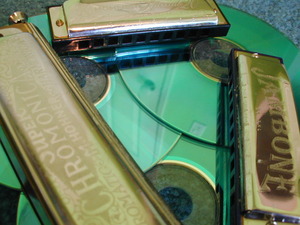So you think you don’t need to learn how to read sheet music. You can play anything you want without it, thanks to those glorious tablature books you have. It took you long enough to learn to play the instrument, you are definitely not spending anymore time with learning. You just want to play and have fun. Besides, a lot of musicians don’t know how to read sheet music. Yet eventually you’ll run into the inevitable and frustrating tab errors. Perhaps the person transcribing your favorite song was pretty lazy that day. Perhaps it was simple human error. If you could read sheet music, you would find a lot less of these errors.
Advantages of Tablature
There are definitely some advantages of tablature. There are forms of tab written for all sorts of instruments, such as: guitar, mandolin, banjo, harmonica, and even the pennywhistle. If you want to be able to just pick up an instrument and play it instantly, all you have to do is find some tablature. For example, on a stringed instrument such as a guitar, the tab just corresponds to what fret number you’re at and what string you’re on. On the pennywhistle, there are six holes and these correspond to the six bubbles in a row on the pennywhistle tab sheet. If the bubbles are filled in, your fingers are pressed over those holes. It’s pretty easy to follow. Even if you never touched a pennywhistle (also known as an Irish tinwhistle) before in your life, you’ll be able to play some simple songs using tab. With the harmonica, you come to an even greater advantage with tablature. At least with the guitar, your notes pretty much stay in the same place (unless you use alternate tunings). With diatonic harmonicas in particular, when you change the key your notes change places. For example, on a key of C diatonic harmonica you have a C on the hole 4 blow. If you want to play the C scale on that harmonica, you can just play 4 blow, 4 draw, 5 blow, 5 draw, 6 blow, 6 draw, 7 draw, and 7 blow. Now you pick up your key of D diatonic harmonica and suddenly you notice that the hole 4 blow is not a C, but instead it is a D. Now you end up with the D major scale when you play the above pattern. So if you were reading notes, you would really get confused quickly if you were constantly switching harmonicas. It’s much easier to just read tablature, even if you have to learn how to write the tablature from notes.
Disadvantages of Tablature
If you’ve played any instrument using tablature for a number of years, I’m sure you’ve noticed by now that the selection is rather limited. On some instruments it is much more limited than for others. In all cases however, you will find more sheet music that you can play than you’ll ever find in tab. I started playing harmonica when I was 8 years old. I bought every book I could find so that I could learn more and more songs. Eventually, I got a chromatic harmonica and wanted to learn even more songs. So I bought more books. I quickly became angry and frustrated. There were so many errors in the tab. This wasn’t restricted to any one brand of book either. Even in the book I eventually used to learn to read sheet music on the chromatic harmonica had tons of errors in its “helpful” tab that was written underneath incase you forgot which note was where. I suppose I can thank those lazy transcribers however, because the frustration finally got to me and forced me to learn to read sheet music on an instrument where most people are content with reading tab.
Learning Sheet Music Isn’t as Hard as It Looks
Maybe you have no sheet music reading skills at all. You’ve looked at a couple pages of sheet music before and it nearly scared you to death with all those little notes and symbols all over it. You gave up learning all that craziness before you would even give it a chance. Perhaps you read sheet music on one or two instruments, but on that other instrument you play, tab is readily available and you haven’t had the incentive to learn yet. That’s who I was. I started playing piano around the same time I started playing harmonica. Yet on piano I could read music. When I learned trombone, there was no trombone tablature and so I just learned to read music. Same thing with the viola. And when I learned the guitar, the 5 lines of sheet music were easier to look at than the 6 lines for tab (one line for each string). Yet for some reason, I was afraid of learning to read music on the harmonica. But when I finally did learn, I couldn’t believe how much easier it was than I had thought at first. I learned one note a day until I knew where all the notes were. Soon I could play a lot more music because I wasn’t limited to only the books I had that were written in tab. I have tons of sheet music, and finally I was able to play it all on my harmonica.
Even if you’re starting out knowing nothing about reading sheet music, you can learn. There are tons of books available that can help you learn to read music. You could even take a class at your local community college if you’d prefer having an instructor to guide you. And just because you’re learning sheet music, that doesn’t mean you have to stop playing the songs you already know and love. You can still read tablature as well, you’ll just have an added skill now.
A whole new world opens up for you when you learn to read sheet music. You are no longer dependent on someone else looking at the sheet music and making it into tab for you. There are so many more songs out there that you’ll be able to find and play. It doesn’t matter how old you are or how long you’ve been playing by reading tablature, you can learn sheet music. It is definitely worth the effort.



